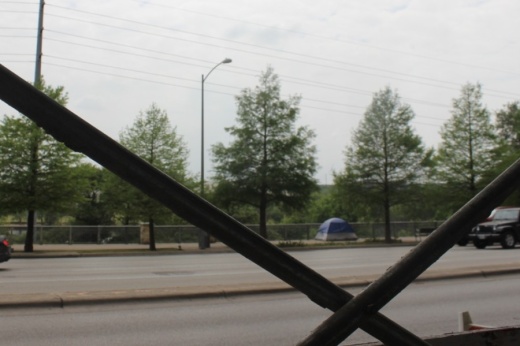Homeless Strategy Officer Diana Grey shared an overview of the proposal and its "banner goal" of rehousing 3,000 people April 20 following a weekslong summit to address unsheltered homelessness in the city which she said featured participation from government, private, nonprofit and community representatives.
The housing initiative, which Grey said would be gradually implemented through mid-2024 in addition to the city's present rehousing pace of an estimated 1,800 people per year, is aimed at targeted outreach and rehousing efforts at encampments of people experiencing homelessness. Officials also noted that the plan fits within the framework of the ongoing first phase of Austin's Housing-Focused Homeless Encampment Assistance Link program, or HEAL, also aimed at addressing the city's prominent homeless encampments and which Grey said was intended as a stepping stone for future initiatives.
"We want to really beef up the teams that are going into the encampments to include the outreach work that we’ve already got folks doing really well in the community. Making sure of course that we continue to have behavioral health resources attached to that outreach team, but also that we offer storage to those who need it while they wait for housing that we’re cognizant of transportation needs that will be there as people transition into housing. And that we really also bring in peers who are really critical in terms of understanding the experience of people who are moving into housing," Grey said.
Based on the strategy outline introduced during the city's recent homelessness summit, Grey said the total cost of the plan is now estimated at around $515 million. Around $222 million is accounted for through committed and anticipated funding, Grey said, with a need for an additional $293 million from both public and private sources still needed to fill in the program's gaps.
Grey and several council members acknowledged that the strategy will require increased contributions from all sides of the Austin and Travis County community to reach its goals, a shift officials said began through the spring summit.
“In looking at this, what seems to be different is that over the last several years I've never seen the chamber of commerce and the Downtown Austin Alliance align with [Ending Community Homelessness Coalition] and Austin Justice Coalition and Homes Not Handcuffs the way that people seem to be aligned now. I think that clears a lot of the path," Mayor Steve Adler said.
Multiple council members expressed approval of the plan and its potential for mitigating homelessness in Austin. Alongside the enthusiasm, some members also questioned city staff on the process's funding and the need for wide-ranging partnerships and philanthropy from local government, business and community representatives for success.
"If we’re going to go to the public and say that we have a plan, we have to be clear about, ‘This is the part the city can fund, and this is the part that we need people to step up.’ Because the plan doesn’t work if it’s just the city," District 10 Council Member Alison Alter said. "I know that the spirit of the summit and everyone who came was to be part of that solution, but before we celebrate it too much we need to make sure that those other pieces are together because we have a crisis and we need to address it. And the quicker we can get these resources in place, the quicker we can address it.”
As planning on the longer-range homelessness plan in Austin continues, City Manager Spencer Cronk also said council's May 4 work session is expected to feature an update on the HEAL program. That update will also come days after Austin voters either approve or reject a ballot proposition to reinstate portions of the city code restricting where people can sit, lay, sleep and camp outdoors.





